Kochi Metro – A proud moment for Keralites to cheer
17th June 17, 2017 – It’s something like a dream comes true. India’s latest and Kerala’s first metro station – Kochi Metro was officially inaugurated by Narendra Modi, PM of India. Many top politicians belonging to different political parties were present at this occasion. Originally proposed in the late 1990s, it’s definitely a herculean task to elevate ‘Queen of Arabian Sea’ to a visually high platform, and definitely a cheer moment for all Keralities especially Kochi people to witness a great moment come true. Kochi Metro connects the major busy stations of Kochi, and makes common man’s life easy by ‘blocking traffic blocks’ to a great extent.
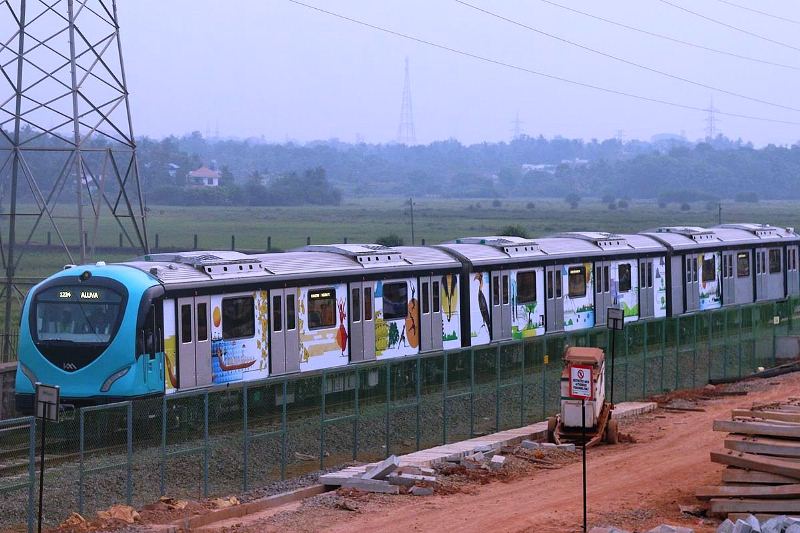
Kochi Metro Train
Though it went through different low and high phases for past one-and-a-half decade, and many even predicted it’s not a feasible project, Kochi Metro achieved a record – Fastest metro project in India in completion time. Since its inauguration in 2013, the project took only 4 years for completion – indeed a great achievement. Not only that it’s the first Indian metro to connect rail, road and water transport facilities. Also read: The major milestones of Kochi Metro Project.
E. Sreedharan – The Metro Man
Though both the political parties have supported the move during different phases of the project by their own proposals, a standing ovation for the great man who stood behind the project as Great Wall and supported the every way he can – through his thoughts and action, none other than Kerala’s pride E. Sreedharan who Malayalis fondly call – Metro Man. He truly deserves it! Sreedharan was the man who dreamt about Kochi Metro almost two decades back and believed it will happen, and he showed how dreams can be given true colours of rainbow.
Kochi Metro – Originally proposed in the year 1999
The project was ideated in the year 1999, RITES was assigned for the feasibility study for a metro rapid transport system in Kochi the same year and techno-feasibility study report was submitted very soon. Since 2002, the project was in pipeline. In 2004, Delhi Metro Rail Corporation (DMRC) was assigned the charge to prepare the detailed project report by then UDF led state government. From there on, strong support was provided by ruling government from both parties, and Kochi Metro finally comes to exist in the year 2017.
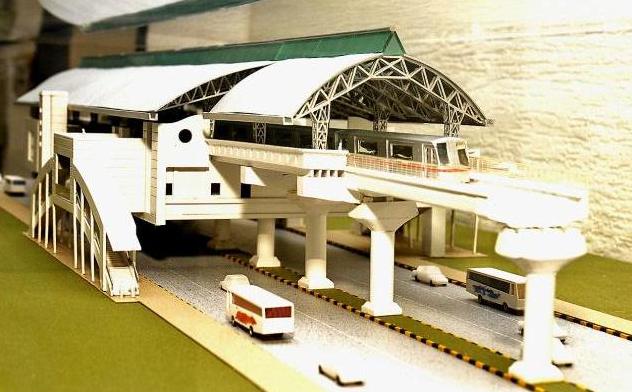
Proposed Plan for Kochi Metro
Preparations were done in a grand manner. That’s the reason why the project got completed in four years – certifies the Metro Man. Yet he regrets the project lagged for one year. Originally the project was supposed to be completed in three years. Though there were a few controversies related to assigning the project to DMRC, strongly supported by E. Sreedharan, later everything came to a happy knot. Through the efforts made in the last 4 years, Kerala has far advanced to 40 years development with this single rail project.
Now Kochi Metro is only a sapling sown, and it will soon branch to all main veins of the city – Petta, Thripunithura, Kakkinad and International airport at Nedumbassery. Now city’s transport system will be in lightning speed, given solutions to the traffic blocks of congested areas of the city. There was an era when local people travelled miles of distance to see the first bicycle in the city. From there, transportation of the city has already taken many laps forward, and we can’t predict what is to happen in the next 10 or 20 years.
Kochi Metro – In a snapshot
Three Coaches, Total length – 66.55 metre, Width of a coach – 2.9 metre, Height 2 Metre, Capacity – 975 people, seats – 136, Maximum speed – 90 Km/hr, Maximum speed inside the city – 80 Km/hr, Average speed in Kochi – 40 to 45 Km/hr. From 6 am to 10 pm, there will be 148 trips with a break of 10 minutes. A train stops at a station for 30 seconds, and the total time from Palarivattom to Aluva is calculated to be 25 minutes covering a total distance of 13.2 Kms. If there are more passengers at each station the trains will be stopped for a little more time. Hartaals won’t affect the service of Metro Kochi.
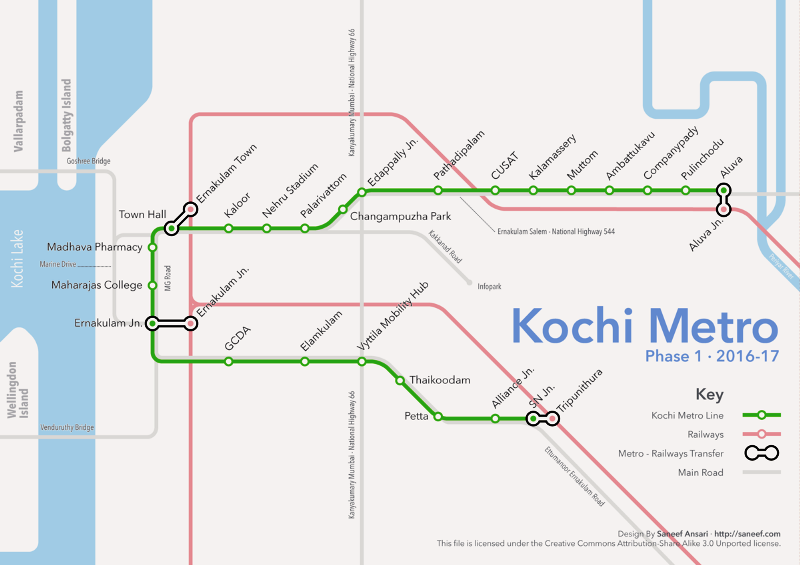
Phase 1 – Kochi Metro Route Map
Currently 11 stations, covering a total distance of 13.2 Kms from Palarivattom to Aluva following is the route map.
Aluva to Pulinjode – 1.728 Km
Pulinjode to Company Padi – 1 Km
Company Padi to Ambatt Kaav – 1 Km
Ambatt Kaav to Muttam – 1 Km
Muttam to Kalamassery – 2.052 Km
Kalamassery to Cusat – 1.378 Km
Cusat to Pathadipaalam – 1.247 Km
Pathadipaalam to Idapally – 1.393 Km
Idapally to Changapuzha Park – 1.3 Km
Changapuzha Park to Palarivattom – 1.008 Km
Major features of Kochi Metro Trains and stations
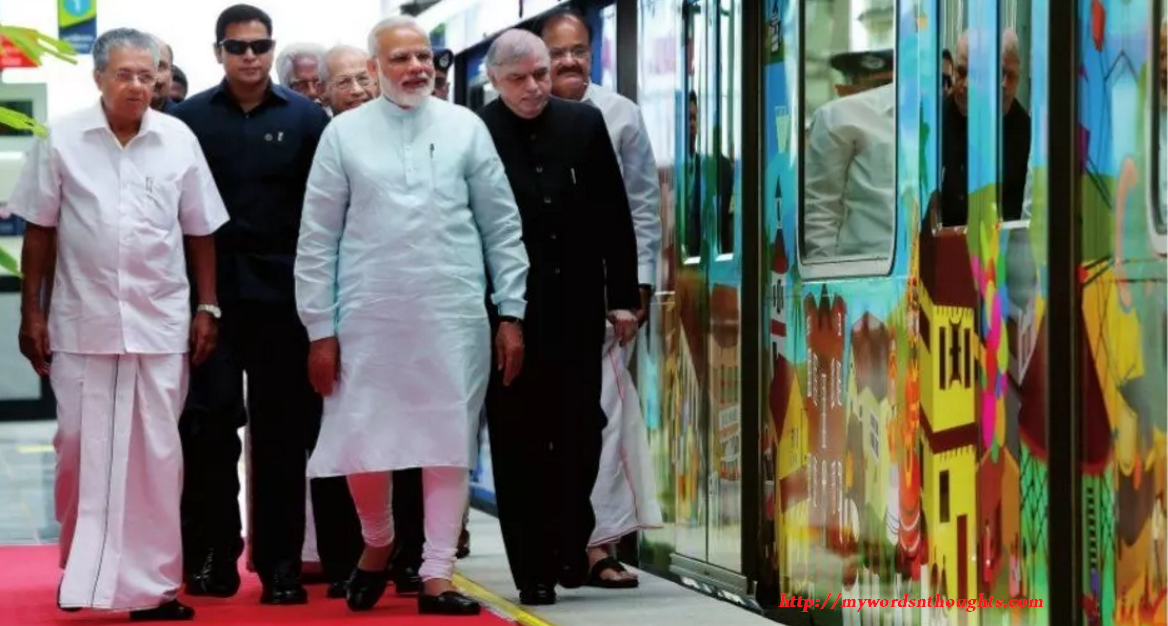
Prime Minister at the occasion of inauguration of Kochi Metro
Emergency switch and Toll free number – An emergency switch is fitted in every train and passengers can use it in case of emergency. If switched is turned on, passenger can communicate with driver, and it’s done for wrong reasons, a punishment might be waiting for. An additional toll free number is also provided.
Special tiles for handicapped – For physically challenged people, it’s easy to travel in the train without any help. Special seats are also reserved for them. Special arrangements have been made for blind and passengers in wheel chairs. Special tiles have been fixed in stations, ticket counters and platforms to help blind people. Tiles are also fixed in the paths leading to toilets, lifts etc. Customer Facility Assistants are also provided for the service. Wheelchairs can easily travel from station gate to trains, and ticket counters with low height are also provided for customers who travel in wheels. Wheelchairs can easily pass automatic fare collection gates. Special spaces are also reserved inside trains for wheelchairs. The passenger can request more time to driver if needed.
Represents Kerala’s culture in design – The trains are designed almost similar to elephant’s face. It resembles a decorated elephant on rails in the front end side. Thus it indirectly supports Keralites’ passion to elephants. Lights in front of engine are arranged in elephant tusk’s pattern. These coaches are specially designed for Kerala by Alstom India.
Wi-Fi & Mobile chargers – Passengers can charge their mobiles and also use Wi-Fi inside trains. Wi-Fi service is not fully started yet. Within two months of functioning of Metro, Wi-Fi between Aluva and Palarivattom will be fully available to passengers. For the first few minutes, Wi-Fi would be free, and after a fixed time it will be charged.
Trains without drivers in distant future – Kochi metro uses Communication Based Train Control (CBTC) system which can also run without drivers. But at present each train will have two drivers, and in future drivers will be omitted.
Display screens in trains on the opposite side of seats – Details of stations are provided in these display screens, including the route map. It also shows the arriving station. Announcements in Malayalam and English will also be provided. A locality map will also be displayed showing the significance of the arriving station. Future plans also corporate ads without sound.
Voice Proof trains – External voices can never disturb metro travels, not even voices of other vehicles on public roads. All coaches are air conditioned and provided with big glasses to enjoy the ride.
Power can never give strikes – Metros run on electricity. Many sub-electric power stations function as a part of this metro project. So, uninterrupted flow of electricity is ensured at different power stations.
Railway lines have electric power – Never even imagine entering the railway lines. Trains run on electric power and hence lines are equipped with electricity. Power is supplied to rails through a third parallel railway line. So permission to railway lines is denied to passengers. In case of emergency, anyone can make use of emergency switches provided in the platform.
Unique horns for trains – Certain melodious horns are specially designed for metro trains. When a train reaches a metro station, melodious tunes accompany the opening and closing of doors and it lasts for three seconds. The tunes were composed by music composer Biji Lal who made use of Kerala’s traditional Ilathalam and Chendamelam. A metro horn with less voice is also provided with every train. It can avoid voice pollution to great extent.
Produces energy on brakes – Whenever the trains put a brake, it produces electricity. This technology known as Hyssop has the potential to convert frictional energy to electric power.
Simple and beautifully designed metro stations
All the stations are specially designed and well equipped with modern technology measures matching international standards. Also they are designed incorporating the splendid beauty of Kerala, its tradition and culture. Western Ghats – is the theme used for it. Safety measures taken are also worth mentioning. Here are some of the peculiarities of Kochi metro stations
Stations in the middle of roads – It’s quite unbelievable, stations are constructed on the pillars fixed in the middle of roads. Construction is done on three floors, and the train arrives on the third floor. On the ground floor several entry and exit doors are present. Ticket counters and bag checking counters are also provided here. Before you reach platform, your bags will be checked as a part of security measures. A door frame metal detector is placed for this purpose. So it’s not possible to hide something that’s not permissible and transport through trains. It also helps to know the total count of passengers. The area is also equipped with a security room and CCTV camera too.
Free Zone and Paid Zone – The whole interior area of metro stations are divided into two sections – Free Zone where one can enter without ticket and Paid Zone where entry is restricted to only those with tickets. Ticket counter and bag checking counter are provided in the free zone.
Ticket gate – After you collect ticket, reach Automatic Fare Collector (AFC) gate. Gate opens when you show the ticket at a marked place in the gate. Only a single person can enter the gate at a time. One gate is especially reserved for physically challenged. This gate is wide enough and wheel chair can easily pass through this gate. In Palarivattom and Changampuzha Park, AFC gates are provided in the ground floor. At Idapally, it’s provided at one side of ground floor and for the rest stations at the upper floor.
Second Floor also called Concourse Level – You can reach second floor after showing your tickets. Staircase, elevators and escalators are provided. Priority is given to senior citizens and physically challenged people to use lifts. Buildings on the either side of the road are connected using Concourse Level. Information about the availability of trains will also be displayed here. Instruction boards are provided to show you the path leading to your platform.
Train arrives at the third floor – Seating arrangements have been done at every station for passengers. Platform is marked with a yellow strip, and passengers should never pass that line. It’s to avoid passengers from falling into tracks. On station floors too, at the entry area of wheelchairs too, such yellow lines are drawn. It’s also shown in display trains. When train reaches the station, doors will open automatically, and automatically closes too, before it continues to next station.
If someone falls to track – Railway lines are equipped with electric power and if someone falls to track, it’s danger. To avoid this Emergency Strip System is provided in the platform of every station, which can block the passage of electricity temporarily. Anyone can make use of the switch in case of emergency, and electricity to rails will be disconnected for that station and also its neighbouring ones. But misuse of switch can lead to punishment. The emergency box also has one telephone, which gets automatically connected to Operation control centre. As it’s a hot line, there is no need to dial a number. Emergency stop plunger is also available in stations, and anyone can press it in case of an emergency.
Energy from solar power – A share of power is provided by solar energy. Solar panels have been fitted in the roofs of railway stations for this purpose and the whole system can fully function for two months uninterrupted with the use of solar power. 25 megawatt electric power is needed for metro every day.
Common washrooms – Toilets at metro stations are available to everyone, not only to passengers. Unpaid toilets are reserved for this purpose; 9 toilets from Aluva to Palarivattom, excluding Palarivattom and Changampuzha Park. Both are paid toilets. In short 9 public toilets are available to public in a short distance of 13 Km.
India’s best Women-Friendly metro – Women safety has been given prior importance, and children and women can travel alone without any fear. Safety cameras are placed in all metro stations and trains. To make women-friendly, more women are employed in the network, of them more than 500 employees were recruited by Kudumbasree.
A ride from Aluva to Palarivattom covering 13.2 Kms
Kerala’s greenery and its beauty have been fully captured and sketched on the walls of different metro stations, and the theme chosen for each glorifies the significance of each place as well.
Aluva – The first metro station of the network is different from others for the presence of Periyar river. Since it’s the first station, special attention has been given to make it beautiful, and its theme is based on Periyar and other rivers of Kerala. It gives an illusion of a flowing river beneath the floor, and on walls too, pictures of rivers are drawn. Every design is a continuation of this ‘river’ theme.
Pulinjodu – The theme used for this station is Western Ghats, and its biological diversity, and pictures with this theme all the walls of the station. The cooling pictures show both saplings as well as big trees, and the pictures used for this purpose were chosen after a painting competition being held on this theme.
Companypady – The theme selected for Companypady is ‘Mountains & Peaks’. Pictures of sky touching peaks give a visual treat to everyone’s eyes, and the beauty of mountain ranges of Western Ghats is fully caught and shot for this theme. Green is the predominant colour used for pictures and other arrangements of the station well-suites this colour theme.
Ambattukaavu – The place is known for reptiles, and hence it’s chosen as the theme of this station too. Walls are filled with pictures of snails, snakes and many other varieties of reptiles, which form a part of the biodiversity of Western Ghats.
Muttam – A cage of birds – That’s for which the place is known for! ‘Birds belonging to Western Ghats’ is used as the theme for Muttam station. Colourful drawings of parrots, peacocks and other birds are drawn on walls.
Kalamasseri – This station too has chosen Western Ghats as theme, and everything significant to the Ghats is exhibited here. Forests, elephants, huts and hornbills form a part of the drawings.
Cusat – Theme chosen is Blue Ocean. As seas formed the major transport for the business and commercial purposes in the ancient days, it has been chosen as a theme. The history of those glorious days is drawn on station walls.
Pathadipaalam – ‘Marine life’ is chosen as theme, and different types of fishes are drawn on walls. Some of the scenes include fishes sailing as groups in the bottom of blue oceans. Similar to other stations, fishes belong to Western Ghats are chosen as theme.
Idapally – ‘Spices of Kerala’ is chosen as the theme of Idapally. The walls of the station give a deep description of spices of Kerala.
Changampuzha Park – The walls of Changampuzha Park describe art and cultural life of Kerala. The station is designed in such a way that memories of the poet Changampuzha are kept alive. Different art forms of Kerala are also given enough importance.
Palarivattom – The last station of the Kochi Metro network at present, it tells the story of flowers belonging to Western Ghats. Photographs of flowers have also been included. The entry point of the station, station walls and lifts are all filled with pictures of flowers. A big photo is fixed on the wall of the lift.
A few instructions to passengers
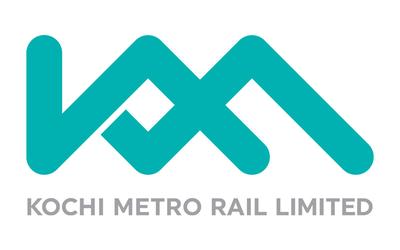
Logo of Kochi Metro
To make this dream worth what’s designed for, a few steps are needed from passengers’ side as well. Keep your metro clean and tidy, and free from havocs. Here are a few.
1. Liquor bottles are not allowed inside trains.
2. Bad comments and foul language are also not allowed.
3. You can’t have food inside metro trains.
4. Pan and chewing gun are not allowed, and you can’t spit in the metro stations.
5. Keep trains, stations and premises neat and tidy.
6. Loud speakers of mobiles are not allowed. Use ear phones to hear songs.
7. No strikes will be allowed in front of metro.
8. You can’t block trains or interrupt the work of railway employees.
9. Stick no bills and posters in trains and metro stations. Writings and scrabbling on walls are also not allowed.
10. Seats reserved for senior citizens, handicapped and ladies should be given to them.
11. Never touch any strange objects seen inside trains or metro stations and in case found any, handle them to authorities.
12. Always stand in queue for alights and entering trains.
13. Sit only in seats. Never sit on floor.
14. You can’t sell things inside trains, and the whole network will be under the surveillance of cameras.
Take care of these steps. And a happy journey!
Read a few more articles on Kochi. Here is the page link. Click on the images in the gallery to read



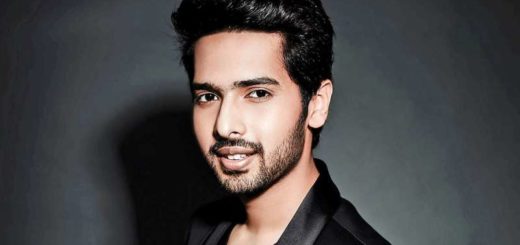
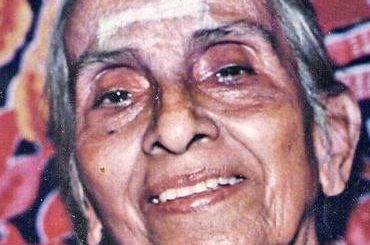








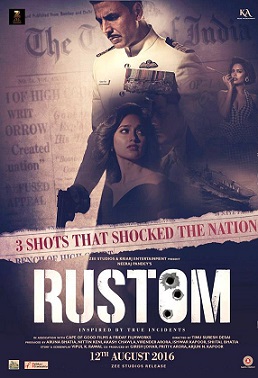
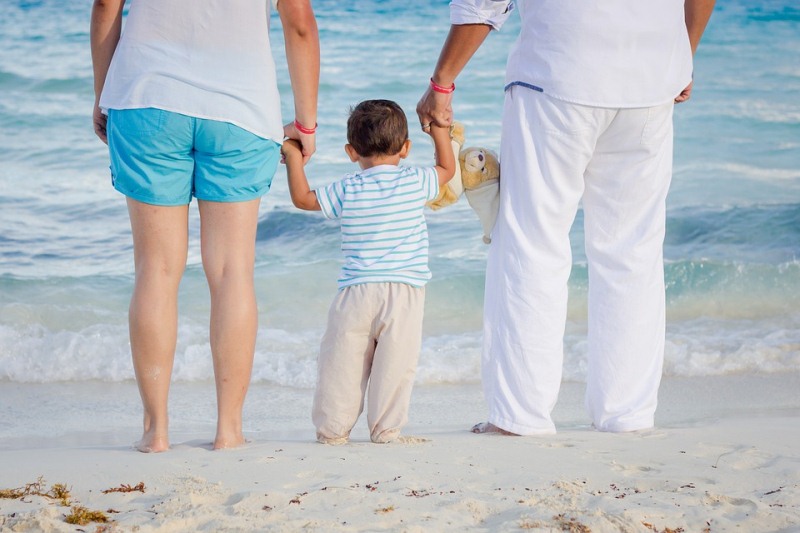
Recent Comments